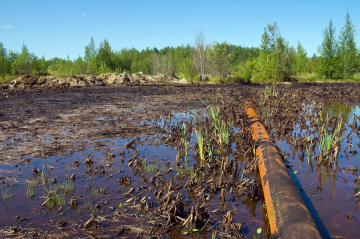Organizations have been managing remediation legacy liability around the world since the 1960s and have experienced a multitude of challenges to reduce these liabilities to zero. The horror stories range from “These sites just never go away” or “Why is there so much variability in this reserve?” along with everyone’s favorite, “Why does the estimated cost to close these sites keep going up with no end in sight?” If you have experienced the maze of regulators, NGOs, attorneys, consultants, public concerns, and internal company pressure, you were probably hoping for a program or strategy that could help you extinguish your liability and be able to present it to your financial or executive team.
Understanding complex technical issues, managing “technically righteous” consultants, keeping regulators happy, and engaging with your operations and finance team can be a struggle. Most people live in a world of constant change orders, complex stakeholder engagement, and regulatory remediation programs that seem to go on forever. These liabilities are a burden to the balance sheet and finding the pathway to manage them to zero is a business-driven goal for your organizational stakeholders. That business driver can be used as a vehicle to close sites and quickly extinguish those legacy remediation liabilities.
At Antea Group we “own” or have owned liability for over 2,000 sites so we know what it is like to be in your shoes. As the owners of the liability, it is in our best interest to close sites and extinguish those legacy remediation liabilities as quickly as possible. Because of these thousands of experiences, our remediation portfolio managers have learned efficient strategies and are able to present these strategies to our leadership in business terms.
There are three key elements to reduce your legacy liability, both on a project and program level, that can keep you out of hot water with regulators, finance, and the C-suite. These three pillars will be the cornerstone of a pragmatic process to enhance your efficiency in reducing or extinguishing your legacy liability.
1. Develop a Conceptual Site Model
The first pillar of a successful legacy liability management program is developing a Conceptual Site Model (CSM) to be able to explain to stakeholders what exactly is happening at a site. The CSM is a visualization that represents the physical, chemical, and biological processes that control the transport, migration, and actual/potential impacts of contamination (in soil, air, groundwater, surface water, and/or sediments) to human and/or ecological receptors). The CSM allows you to:
- Focus on the movement and risk of impacts, not the total mass
- Visualize the data in 2D and 3D allowing you to see critical details that are lost in tabulated data and figures
- Have a communication tool to use for stakeholder engagement
The creation of the CSM provides a common platform for the collaboration of technical, business, and regulatory stakeholders. Using “best-in-class” technology to build your CSM leads to more informed business decisions. You will have more meaningful engagement with your business leaders when using better data representation. These tools allow you to identify source areas, define residual contaminated mass, refine the groundwater plume architecture, provide an intimate visual depiction of contaminant distribution over time, and identify and close data gaps. The CSM is a powerful tool to support your exit strategy and reduce your long-term remediation costs. It helps you establish risk-based endpoints, allows you to be more surgical in your cleanup approach, and helps to foster strong communication as a negotiating tool for stakeholder groups.
2. Negotiate a Flexible Exit Strategy
The second pillar to a successful legacy liability management program is to negotiate a flexible exit strategy. A business-friendly exit strategy can be dynamic, but you must have the flexibility to make changes as more information becomes available. The first step in building your exit strategy is to understand your internal business philosophy and framework the exit strategy must operate within. If your organization is trying to minimize short term cash outlay, you may want to negotiate a longer-term “compliance only” strategy. On the other hand, if you are being pressured to quickly extinguish these liabilities, your approach will be more aggressive. It is critical that you match your business needs to a defensible exit strategy.
The key to a best-fit exit strategy is to also understand the regulatory and community environment in which you are operating. Be transparent with regulatory agency teams and use all the tools in your toolbox as you negotiate with agencies. Bringing all those tools to the table is not always simple but they could include anything from being a “partner” with the oversight agency to crafting a clear public message. Agree on what “done” looks like, agree on the CSM, and agree on the use of rapid and accepted investigation and closure tools such as High-Resolution investigation, Triad, RCRA First, Adaptive Site Management (ASM), and risk assessment. It is important to foster a transparent relationship with your agency team through structured communication so there is a constant flow of information. Make sure you are documenting and agreeing on steps towards closure along the way. These tools and techniques allow you to control the throttle and determine the rate to move a project or program forward, resulting in flexibility to control cash flow.
3. Monetize the Exit Strategy and Present the Approach to Your Executive Team
The final key element in a successful legacy liability management program is to monetize the exit strategy and be able to present your approach to your executive team. You may now have a better seat at the C-Suite table from your engagement through COVID-19. Having the ability to turn your CSM and exit strategy into predictive spend and reserve are invaluable when communicating with this group of internal stakeholders. Monetization simplifies technical discussions with non-technical audiences, helps define the true risk drivers, and translates complex data sets to make informed business decisions. These business decisions can be further supported by economic lifecycle cost modeling in support of corporate reserve setting and communicating the foundation for regulatory negotiations.
Oftentimes, when modeling a site, you will discover that it is prudent to invest upfront to reduce your back-end lifecycle cost. Cost modeling tools provide a quick, simple, and visual way to do that. This will help deepen the partnership between you and your leadership to avoid surprises in your reserve process, monetize the exit strategy and cash flow, and identify potential barriers to extinguishing legacy liabilities. Cost modeling tools at your disposal include both deterministic and probabilistic approaches that meet FASB5 and ASTM guidance. Some business benefits of using cost modeling tools include:
- Development of a defensible management philosophy and process that reduces reserve variability and promotes communication using key performance criteria (cash flow, liability reduction, reserve setting, etc.)
- Consistently apply a reserve management process
- Balance cash flow with liability reduction
- Reduce administrative and non-value-added efforts
Even amid the chaos of today’s environment, it is critical to pause and take the time to implement these three pillars to establish a successful legacy liability program. Not only will this give you more time to focus on other assignments, but it will improve your understanding of risk drivers, improve regulatory relationships, and cement your relationship with the C-Suite. We’ve found the greatest benefit of implementing these three pillars is learning to convey your strategy in business terms to your finance, operations, and C-Suite.
Contact our Environmental Remediation team with questions and learn more here.
Want more news and insights like this?
Sign up for our monthly e-newsletter, The New Leaf. Our goal is to keep you updated, educated, and even a bit entertained as it relates to all things EHS and sustainability.
Get e-NewsletterHave any questions?
Contact us to discuss your environment, health, safety, and sustainability needs today.







